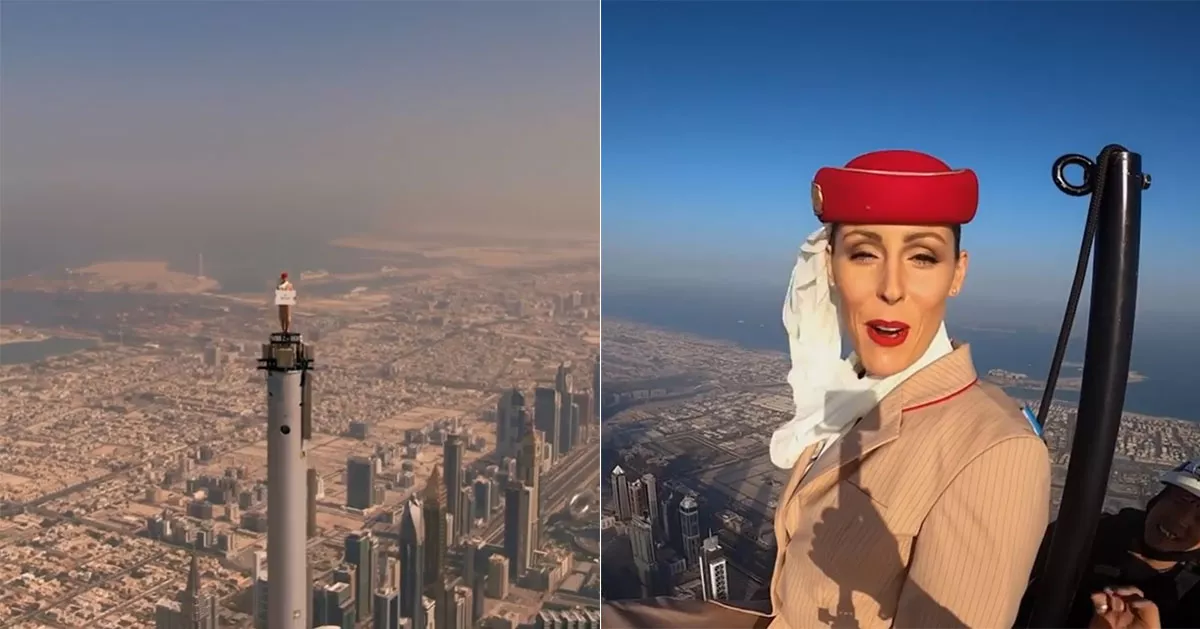UAE celebrates 40 years since national carrier's maiden flight to Karachi
Emirates, the United Arab Emirates’ national carrier, is marking 40 years since its maiden flight in 1985 — a milestone that reflects both the airline’s phenomenal rise and the UAE’s transformation from an oil-based economy to a global trade and tourism hub. To commemorate the occasion, the airline hosted a special event at Karachi’s Jinnah International Airport, the destination of its first-ever flight, where it showcased its newly retrofitted Boeing 777 featuring Premium Economy cabins.
The preview event, held on the eve of the anniversary, allowed aviation officials, industry stakeholders, and media representatives to tour Emirates’ reconfigured four-class aircraft, as the airline announced on their website. The special flight, EK600, landed in Karachi at 10:45 a.m., offering guests an exclusive look at the airline’s Premium Economy service — now available on an increasing number of international routes.
"Karachi holds a special place in Emirates' history as the first international destination where Emirates made its maiden trip from its hub in Dubai," said Mohammed Alhashmi, Emirates’ Vice President for Pakistan. “Over the past 40 years, we have proudly connected Pakistan to the world, supporting travellers, businesses and communities. In our commitment to the country, we have also contributed to the growth of the country’s aviation sector and economy and played an active role in job creation.”
Sheikh Mohammed bin Rashid Al Maktoum, Vice President and Prime Minister of the UAE and Ruler of Dubai, described Emirates as “a national pride that has transported more than 860 million people across the world (in four decades).” He also extended his appreciation to Sheikh Ahmed bin Saeed Al Maktoum, the airline’s chairman and chief executive, and to the “team of more than 100,000 employees who work day and night to keep Emirates Airlines an unprecedented Emirati success story.”
Before Emirates was established, Dubai International Airport relied on Bahrain’s Gulf Air for international service. With just $10 million in seed funding and two wet-leased aircraft from Pakistan International Airlines — a Boeing 737 and an Airbus 300 — Emirates launched on October 25, 1985, with flights to Karachi and Mumbai.
Reflecting on this evolution, an article by Khaleej Times cited Sheikh Ahmed, who recently stated, “When the government set up Emirates 40 years ago and we began expanding dnata’s capabilities to support the city’s growth, we had a clear mission — be the best at what we do; and deliver value to Dubai, our stakeholders, and the communities we serve.”
Today, Emirates operates a fleet of 260 aircraft and flies to more than 160 destinations across over 85 countries, with further expansion on the horizon.
Boutros Boutros, Executive Vice President of Corporate Communications, Marketing & Brand at Emirates Group, joined the airline in 1991 when it had only seven aircraft and 11 destinations. He recalls in an interview with the publication, “We’re different, that’s why we are successful. I remember in 1992, we were the first airline in the world to introduce in-flight entertainment with a screen in every seat, including economy. People across the industry laughed at us, at everything we did, all the way.”
Boutros also recalled the guiding principle from Sheikh Mohammed in 1985: “Be good, look good and make money.” When handed the initial $10 million, Sheikh Mohammed reportedly said, “This is your money, but don’t come back for more.” That early challenge set the foundation for Emirates’ independent success, propelling it to become one of the most profitable airlines in the world.
According to the latest financial reports, Emirates recorded profits before tax of Dh21.2 billion (US$5.8 billion), a 20 percent rise from the previous year, along with record revenues of Dh127.9 billion (US$34.9 billion) and the highest-ever cash reserves of Dh49.7 billion (US$13.5 billion).
Sheikh Mohammed has previously described the airline as “more than a transport company,” calling it a “tool for economic transformation for the UAE, a strategic bridge connecting the world’s continents, and a developmental carrier flying us through the skies, towards the future.” From pioneering free in-flight entertainment in economy class to global sponsorships and celebrity partnerships, Emirates’ influence has extended well beyond aviation.
Its logo now adorns stadiums and jerseys around the world, from football and rugby to tennis and horse racing, with 50 percent of its marketing budget dedicated to sports sponsorship. The airline’s campaigns have featured stars like Jennifer Aniston, Penélope Cruz, Chris Hemsworth, and Cristiano Ronaldo, solidifying its global brand identity.

But reflecting on past efforts, he admits it isn’t the most successful campaign yet. “I think the most effective campaign was the lady on the top of Burj Khalifa,” he said, referring to the audacious Expo 2020 Dubai ad, which featured a female cabin crew member atop the world’s tallest building to welcome visitors to “the world’s greatest show.” Initially designed for social media with a modest budget of just Dh60,000, the campaign was later expanded into a full-scale advertisement, showcasing a specially branded aircraft performing 11 flybys — a spectacle that has since garnered nearly 300 million views.
With an average fleet age of 10.7 years, Emirates operates Boeing 777s, Airbus A380s, and A350s, and has more than 300 aircraft currently on order — underscoring the airline’s continued ambition to expand its reach and redefine international air travel.
By Nazrin Sadigova








